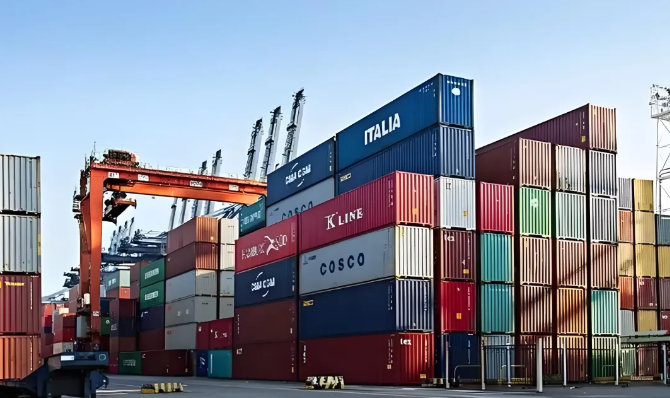All categories >
What are the handover methods of container transport goods in international logistics.
Categories:
Time of issue:
2024-11-08 18:35
In container transportation, the way of goods handover is an important link to ensure the smooth and safe transportation of goods. According to different transportation modes and needs, there are mainly the following handover methods:
Door to Door (D/D)
Definition: The carrier withdraws the goods directly from the consignor's factory or warehouse and transports them to the consignee's factory or warehouse.
Features: The carrier is responsible for the whole process, including inland transportation, customs declaration, sea transportation and other links.
Applicable scenarios: Suitable for customers who need one-stop service, especially for small businesses and companies that do not have their own logistics team.
2. Door to CFS (D/CFS)
Definition: The carrier takes the goods from the shipper's factory or warehouse and transports them to the container freight station (CFS) at the destination.
Features: The consignor is responsible for delivering the goods to the designated place of the carrier, and the carrier is responsible for subsequent sea and inland transportation.
Applicable scenarios: applicable to the consignor has its own transport vehicles or cooperation logistics suppliers.
3. CFS to Door (CFS/D)
Definition: The carrier receives the goods at the container freight station (CFS) at the place of origin and transports them to the consignee's factory or warehouse.
Features: The carrier is responsible for the transportation from CFS to the final destination, and the shipper only needs to deliver the goods to CFS.
Applicable scenarios: applicable to the consignee does not have its own transport vehicles or want to reduce the transport responsibility.
4. Field to Field (CFS to CFS, CFS/CFS)
Definition: The carrier receives the goods at the container freight station (CFS) at the place of origin and transports them to the container freight station (CFS) at the destination.
Features: Both the consignor and the consignee need to arrange the transportation from the factory or warehouse to the CFS by themselves.
Applicable scenarios: applicable to both parties have their own transport vehicles or cooperative logistics providers.
5. Door to CY, D/CY
Definition: The carrier takes the goods from the shipper's factory or warehouse and transports them to the container yard (CY) of the destination.
Features: The consignor is responsible for delivering the goods to the designated place of the carrier, and the carrier is responsible for the subsequent sea and inland transportation to CY.
Applicable scenarios: applicable to the consignor has its own transport vehicles or cooperative logistics suppliers, and the consignee has the ability to pick up the goods from CY.
CY to Door (CY/D)
Definition: The carrier receives the goods at the container yard (CY) at the place of shipment and transports them to the consignee's factory or warehouse.
Features: The carrier is responsible for the transportation from CY to the final destination, and the shipper only needs to send the goods to CY.
Applicable scenario: applicable to the consignor does not have its own transport vehicle, but the consignee has the ability to transport.
7. CY to CY, CY/CY
Definition: The carrier receives the goods at the container yard (CY) at the place of origin and transports them to the container yard (CY) at the destination.
Features: Both consignor and consignee need to arrange the transportation from factory or warehouse to CY by themselves.
Application scenario: It is applicable to the situation where both parties have their own transportation vehicles or cooperative logistics suppliers, and mainly focus on the transportation of the sea section.
8. Ship to Ship (S/S)
Definition: Direct transfer of goods by sea, usually for transshipment or replenishment.
Features: suitable for ocean transportation need to transit situation.
Applicable scenarios: suitable for large ships to exchange or replenish goods at sea, reducing the landing time.

Choosing the right way to hand over goods depends on a number of factors, including the nature of the goods, the distance traveled, the cost budget, the customer's needs, and the logistics capabilities of both parties. Enterprises should choose the most appropriate handover method according to their own situation and specific needs to ensure the safety and punctual arrival of goods. In case of doubt, it is recommended to consult a professional international logistics company or logistics consultant for more detailed guidance and help.










